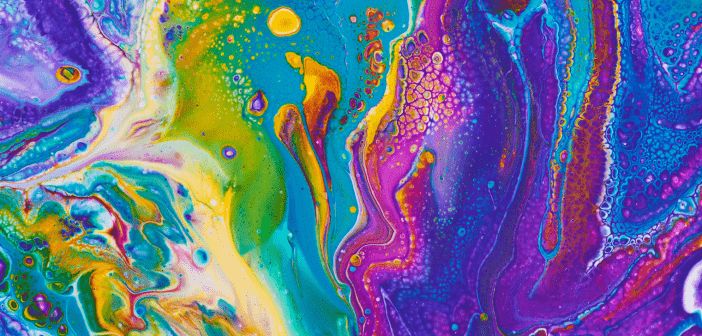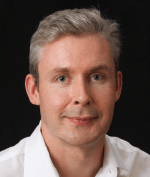The art of bioanalysis

In this column from Robert MacNeill (Pharmaron; PA, USA), he discusses the artistic quality of quantitative bioanalytical LC–MS and how to embrace method development workflow as an art form.

Robert MacNeill received his Bachelor’s degree with Honors in Chemistry from Heriot Watt University then his MSc in Analytical Chemistry from the University of Huddersfield, both in the United Kingdom. Robert is also a Chartered Chemist and a Fellow of the Royal Society of Chemistry. With 20 years of experience in all aspects of quantitative bioanalytical LC–MS/MS method development, 11 of these years heading method development activities within HLS/Covance, and a regular author and peer reviewer for the journal Bioanalysis, Robert is a recognized expert and innovator in the field.
In his current role Robert coordinates all LC–MS/MS method development and associated training, takes the lead in keeping abreast of innovation and technological development in the industry, leads in-house research projects and performs technical writing for the purpose of producing publications.
“There is an art to science and a science in art; the two are not enemies, but different aspects of the whole.” – Isaac Asimov
There are surely few concepts as profound as that of art, as in what constitutes art and what, by any perception, it could all mean. Then, what food for thought and endless discussion in how science relates to art. Can science be harnessed as a medium through which we can expound on our innermost soul-emanating feelings and thoughts? For that matter, how about the potent paintbrush known as quantitative bioanalytical LC–MS?
I count myself lucky to be no stranger to the feelings of elation that come, for instance, after being visually glued to the achingly slow progress of a chromatographic trace within a pivotal sample injection cycle, waiting for a key moment. This is when the intensity suddenly rockets at the right time, and it is blissfully clear that your analytical head-scratching and innovation have resulted in an emphatic recovery in your sample preparation scheme. In turn, when quantitative batch data are just at the end of processing post-acquisition and the moment comes when reels of perfect-looking data are unfurled before your eyes, making your day. Gleaning moments of contentment from this output amounts to our own work showing our expressions, our thoughts and creativity.
Moreover, we can envelop ourselves in the overall method development workflow, in all the main themes, associations, nuances and intricacies, and embrace it as an art form. To the seasoned quantitative analytical scientist, it is well-established that going through the process of method development, particularly from scratch, is a potentially labyrinthine predicament. This is, in terms of the multiple junctures where decisions are made, usually on a physicochemical or instrumental basis. A seemingly innocuous parameter could have great impact on a method’s performance, and this is a multi-parametric predicament. Also, consider that, in the context of best analytical science, for a given methodological objective there are likely numerous different avenues and combinations that could come together to form a great method. Holistically, looking at the decision matrix, it becomes what may be regarded as a means of self-expression. We have plenty at our fingertips. Every aspect of the stock and solution preparations, solvent composition, pH, and choice of vessel to name but a few considerations. Then we have the sample preparation domain which represents a veritable myriad of decision-making, propagating into a similar vastness of playground in chromatography, with some areas only now being set foot in by intrepid, gifted explorers. Without even mentioning the vital arena of the mass spectrometric endpoint, the idea has taken shape and is surely worthy of a tribute of sorts: –
A beauty defined yet undefined, a bustling workplace rewarding in reliability,
Precision and performance intermingled and profound.
Instrumental wonders, technological triumphs,
Amid immense characters of great minds applied,
Commanding data quality, all eyes aglow in familiar satisfaction.
Art within science, a world complete and without limits, beckoning the curious to venture forth.
To bioanalysis, my daily domain, lifeblood supporting lifeblood.
It is rather an abstract yet weighty notion. Can we find means of self-expression in the bioanalytical lab? In days gone by, in the very early stages of my career, when I was more attuned to a perceived separation in arts and sciences because of my educational choices and channels, I may have struggled more with this line of thought. But why, yes, I would now say it’s a blank canvas, with foundations in good science and artistic accommodation galore. Edward G. Bulwer Lytton once said “Art and science have their meeting point in method” which I find particularly apropos.
Let creativity thrive!
“The greatest artists are scientists as well.” – Albert Einstein

Sincere thanks to Hazel Dickson from Waters Corporation (MA, USA) for the visual.
Disclaimer: the opinions expressed are solely my own and do not express the views or opinions of my employer
Our expert opinion collection provides you with in-depth articles written by authors from across the field of bioanalysis. Our expert opinions are perfect for those wanting a comprehensive, written review of a topic or looking for perspective pieces from our regular contributors.
See an article that catches your eye? Read any of our Expert Opinions for free.
